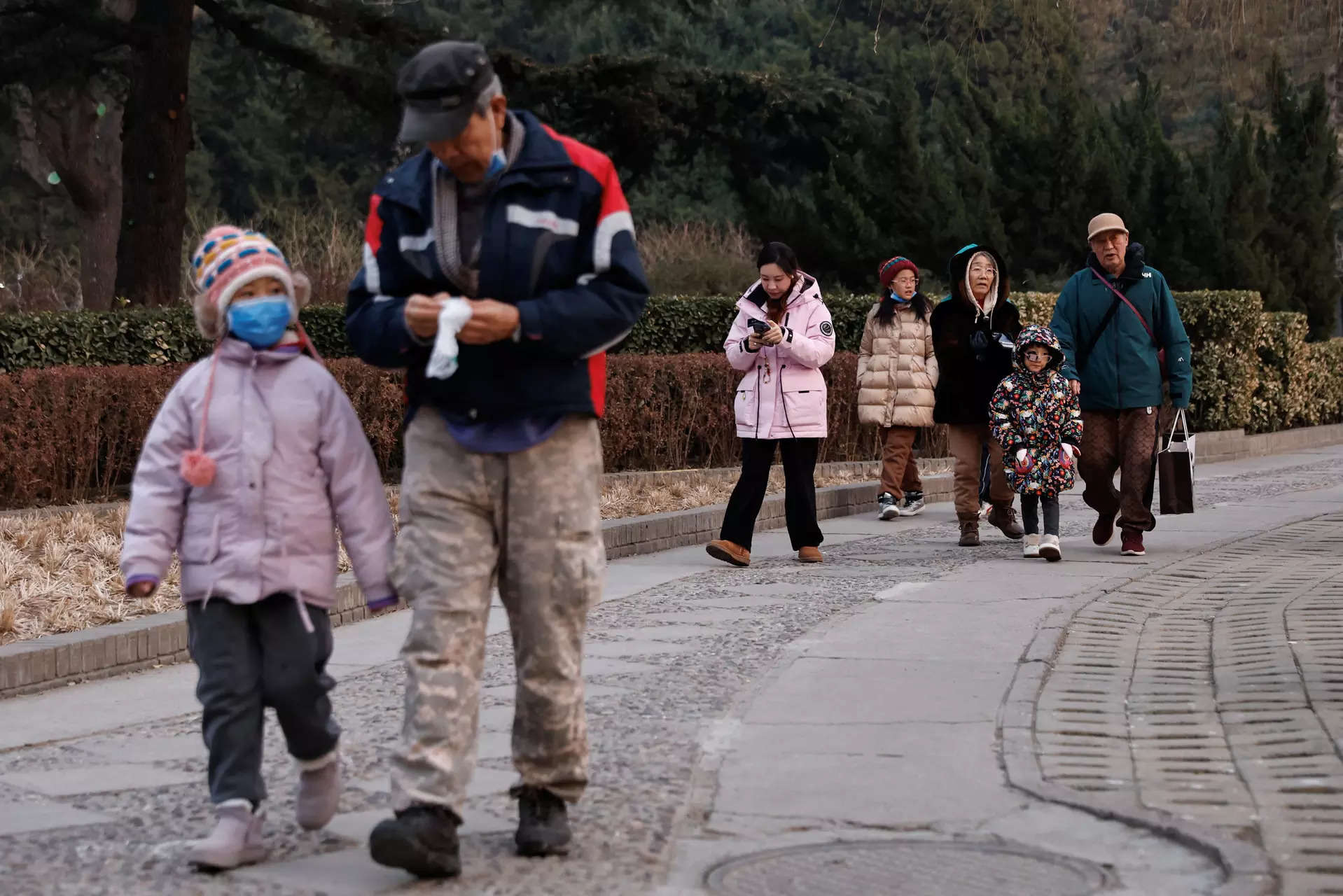In 2023, China witnessed a further decrease in its population, marking the second consecutive year of decline since the previous year’s historic drop. The total population of mainland China reduced by 2.08 million, settling at 1.4097 billion from the 1.4118 billion recorded in 2022, as per the latest official statistics.
The nation observed a significant reduction in childbirths, with only 9.02 million births in the last year, a 5.6% decrease from 2022’s 9.56 million.This downturn led to the lowest birth rate recorded since 1949, with only 6.39 births per 1,000 individuals, a drop from 6.77 in the preceding year, a report in South China Morning Post said.
Additionally, the death toll rose to 11.1 million, resulting in a national death rate of 7.87 per 1,000 people. This figure is an increase from the previous year’s 7.37 per thousand, although the specific count of deaths attributed to the coronavirus remains undisclosed following the relaxation of strict health measures at the end of 2022.
The demographic data encompasses the 31 provinces, autonomous regions, and municipalities of China, including servicemen, but does not account for foreign nationals.
Experts caution that China, the world’s second-largest economy, is poised to confront several challenges due to this demographic shift. These include a diminishing workforce, reduced consumer spending, and increased pressure on the social security system as the population continues to age.
The slowdown in population growth has been evident since 2016, exacerbated by factors such as the high cost of raising children, a shift towards individualism, and diverse lifestyle choices. The stringent zero-Covid policies between 2020 and late 2022 have also played a part in this demographic trend.
In 2023, India surpassed China as the most populous nation, according to United Nations projections.
The World Bank classifies a country as “aged” when over 14% of its population is 65 or older and “super-aged” when this figure exceeds 20%. China reached the “aged” category in 2021 for the first time.
In response to the aging trend and to encourage more births, Beijing has implemented several measures in recent years. These include relaxing birth restrictions to allow up to three children per family and introducing various incentives from local governments, such as extended parental leave, tax reductions, and monetary benefits for families with multiple children.
(With inputs from agencies)
The nation observed a significant reduction in childbirths, with only 9.02 million births in the last year, a 5.6% decrease from 2022’s 9.56 million.This downturn led to the lowest birth rate recorded since 1949, with only 6.39 births per 1,000 individuals, a drop from 6.77 in the preceding year, a report in South China Morning Post said.
Additionally, the death toll rose to 11.1 million, resulting in a national death rate of 7.87 per 1,000 people. This figure is an increase from the previous year’s 7.37 per thousand, although the specific count of deaths attributed to the coronavirus remains undisclosed following the relaxation of strict health measures at the end of 2022.
The demographic data encompasses the 31 provinces, autonomous regions, and municipalities of China, including servicemen, but does not account for foreign nationals.
Experts caution that China, the world’s second-largest economy, is poised to confront several challenges due to this demographic shift. These include a diminishing workforce, reduced consumer spending, and increased pressure on the social security system as the population continues to age.
The slowdown in population growth has been evident since 2016, exacerbated by factors such as the high cost of raising children, a shift towards individualism, and diverse lifestyle choices. The stringent zero-Covid policies between 2020 and late 2022 have also played a part in this demographic trend.
In 2023, India surpassed China as the most populous nation, according to United Nations projections.
The World Bank classifies a country as “aged” when over 14% of its population is 65 or older and “super-aged” when this figure exceeds 20%. China reached the “aged” category in 2021 for the first time.
In response to the aging trend and to encourage more births, Beijing has implemented several measures in recent years. These include relaxing birth restrictions to allow up to three children per family and introducing various incentives from local governments, such as extended parental leave, tax reductions, and monetary benefits for families with multiple children.
(With inputs from agencies)
